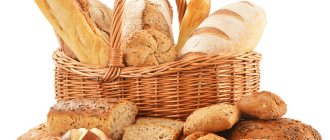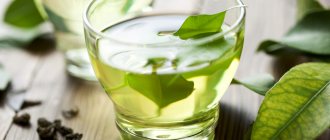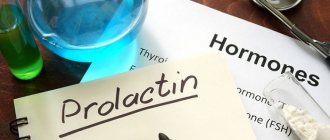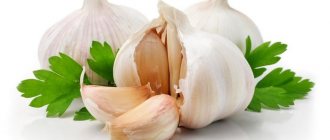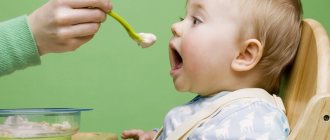Principle 1. Know when to stop
A common misconception is eating for two during lactation. It is excess food and poor nutrition that become the main provocateurs of excess weight in the postpartum period.
Strict diets are the other extreme. You can't afford to undereat. The baby needs vitamins, microelements, proteins (meat, fish, chicken eggs, low-fat cottage cheese, legumes), carbohydrates (cereals, vegetables and fruits, whole grain or bran bread) and even fats (lean meat, fish, vegetable oil). Plus, breastfeeding requires a lot of energy from you. Where will you get it if you eat poorly while breastfeeding? During this period, the energy value of your diet should be about 2000 kcal.
Dish from childhood
Semolina porridge has no less set of useful substances. She is always associated with childhood.
- It is recommended to eat semolina porridge in the morning. It removes harmful substances, fats and mucus from the body.
- Semolina is useful for diseases of the digestive system, relieves inflammation and spasm from the intestinal and stomach mucosa.
- Semolina porridge does not contain protein, so the dish can be eaten by those who have kidney disease.
But semolina should be used with caution. This is due to some of its features.
- Cereals contain a special substance that prevents the body from absorbing calcium, iron and vitamin D.
- Frequent use leads to the development of a disease in a child such as rickets.
- Semolina contains gluten, which often causes allergies.
- Children with gluten intolerance may develop celiac disease. With this disease, the intestinal mucosa becomes thinner and poorly absorbs nutrients. The child begins to gain weight weakly and muscle mass decreases.
- Semolina porridge is high in calories, which affects not only excess weight, but also intestinal function. The risk of developing colic and increased gas formation increases.
Semolina porridge is not recommended to be included in the menu until the child is 2-3 months old. The first time you need to cook it in water, but not in milk, without adding sugar or salt.
Principle 2. More natural
The dishes on your menu should be tasty, high quality and always natural. It is better to eat fruits and vegetables raw or minimally processed, of course, if the season and the state of the gastrointestinal tract permit. These can be freshly squeezed juices, vegetable salads with sour cream or vegetable oil, fresh herbs, stewed or steamed vegetables.
Eliminate foods containing preservatives and other synthetic food additives from your diet. Instead of store-bought sausages, frankfurters and sausages, eat natural meat, instead of smoked or salted fish - boiled or baked in the oven, instead of packaged juices - homemade compotes, fruit or herbal teas, mineral water.
Products for breastfeeding
A young mother during breastfeeding should carefully monitor what she eats. The list of products must include ingredients for mandatory consumption. We're talking about meat. It's better if it's low-fat. Vegetarians can replace meat with fish.
To saturate the body with vitamins and proteins, you should eat eggs and dairy products. It will be useful to eat boiled or baked fish. Milk will enrich food with calcium, which is extremely important for a growing body. The child will receive the necessary building material for his skeleton and immunity, and the mother will maintain a beautiful figure.
Vegetables and fruits will help fill your diet with fiber. These products stabilize digestion and allow a woman to quickly feel full. In this way, it will be possible to satisfy the feeling of hunger without eating an excessive amount of food, which will subsequently affect the volume of the female figure.
Without fear of extra pounds, it is recommended to include cereals in a properly structured diet. For example, corn, rice, buckwheat and millet are very healthy. It is better to leave legumes aside for now.
Principle 3. Minus calories
Do not believe the stories that during lactation a nursing mother needs to eat more fatty foods. This will not make the milk any more nutritious. But your waist and hips will definitely increase. Therefore, if you plan to quickly lose weight, exclude excessively high-calorie foods from your diet. Avoid fatty pork in favor of veal, chicken and rabbit meat, turkey, and lean sea fish (pike perch, hake, cod). Replace buns and white bread with whole grains, and pasta with cereals. Give preference to fresh, boiled or baked products - these cooking methods do not use additional fat.
What kind of bread can a nursing mother eat?
When you come to the store, you may be surprised by the assortment of bread offered. Of course, a young mother wants to try them all, because nursing women usually have a good appetite. But common sense prevails, and first of all, the woman decides to resort to studying useful information. Typically bread is baked from the following products:
- different types of flour;
- sugar;
- yeast;
- baking powder;
- thickeners;
- stabilizers;
- nutritional supplements.
Rye flour, sometimes combined with wheat, is used for baking rye or black bread. If grains or pumpkin or sunflower seeds are added to it, then such bread is called grain bread. Most women love bread with added bran, which is called bran bread. It is prepared with or without yeast. But white bread, as you know, is baked from wheat flour.
Black bread (rye, Borodino) during breastfeeding
This type of bread consists of the following components:
- rye and second-grade wheat flour;
- malt;
- molasses.
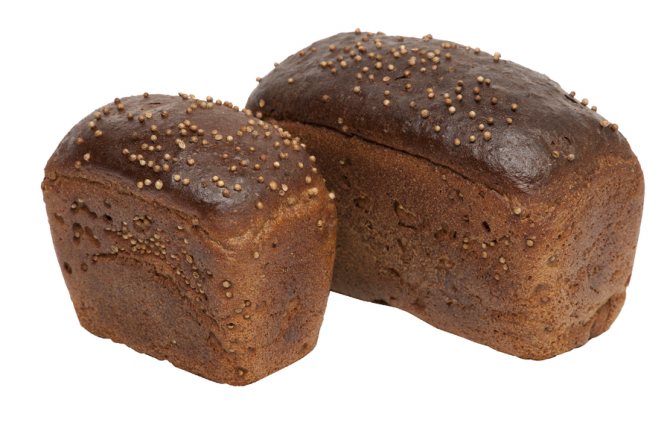
Rye and Borodino bread are healthy: they contain vitamins E, B, PP and complex carbohydrates
Rye flour is very healthy: it contains vitamins E, B, PP and complex carbohydrates. Rye flour has a positive effect on digestion and the functioning of the circulatory system. Rye bread is considered a low-calorie product, and it is even necessary to consume it while breastfeeding. However, in some cases this product should be discarded:
- for acute gastric diseases;
- in the period after cesarean section (for a week);
- with a predisposition to increased gas formation in the mother or baby.
Malt bread while breastfeeding
It is better to exclude bread with malt from the diet of a nursing mother, since the high level of glucose in them contributes to the rapid gain of extra pounds. The calorie content of such bread is 236 kcal per 100 g of product. It is rich in useful components, including vitamin B, C and PP groups, magnesium, calcium, zinc, selenium, etc. The fiber and dietary fiber contained in malt bread contribute to good digestion.

Malt bread contains large amounts of glucose, so it is not recommended during breastfeeding
Malt bread has an extraordinary taste: it is aromatic and at the same time very beautiful. Bread gets its rich dark color by adding malt. Over time, a young mother will be able to add this bread to her diet, but this should be done in small proportions and only after introducing the baby’s first complementary foods.
Whole grain bread while breastfeeding
Whole grain bread is considered the most ancient: its recipe has been known since the Stone Age. Today this bread is considered almost elite and practically the only type that can be eaten without harm to the figure and metabolism. Wheat grain contains almost all useful substances:
- vitamins;
- enzymes;
- amino acids.
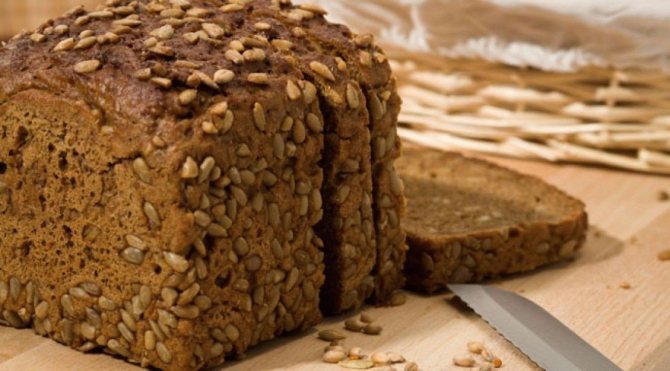
Whole grain bread is recommended during breastfeeding
Whole grain bread is well absorbed by the body, does not disrupt metabolism and activates good intestinal function. The product is baked from whole grains, which are soaked, added to sourdough, and fermented. In such a product, all useful components are preserved to the maximum. A young mother can eat whole grain bread without fear, but she must choose a truly high-quality product. The fact is that some manufacturers violate the technology of its preparation and add soaked grain to regular dough made from wheat flour, and this is less healthy. Therefore, before buying whole grain bread, be sure to study its composition.
White bread while breastfeeding
White bread contains wheat flour of the first and second grades. For baking, it is completely cleaned, so few useful components remain in it. Long loaves and baked goods are baked from white flour. Typically this white bread contains the following products:
- fats;
- eggs;
- sugar;
- milk, etc.
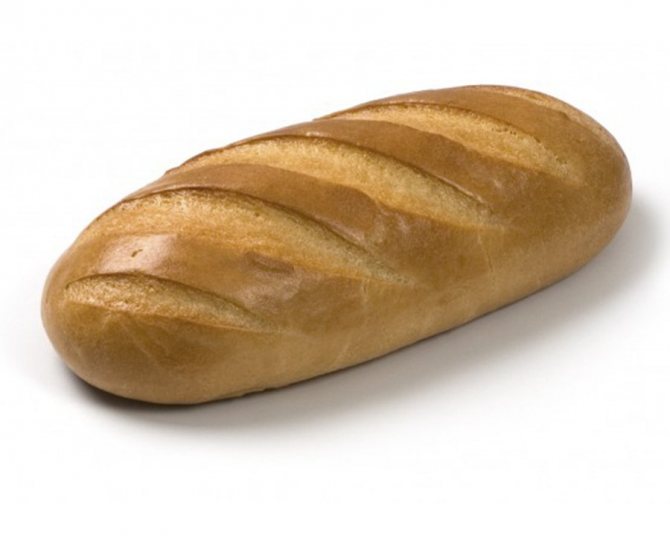
White bread has a high glycemic index, which increases blood sugar levels when consumed: accordingly, it cannot be recommended for a nursing mother
All of them increase the calorie content of white bread. All this, of course, is tasty, but of little use. White bread has a high glycemic index, which increases its ability to increase blood sugar levels. This produces insulin, which prevents the breakdown of fats. White bread contains virtually no fiber, which helps improve metabolism. All this leads to the appearance of extra pounds, which are undesirable for a young mother. Therefore, doctors recommend avoiding white bread during breastfeeding, or consuming it in small quantities.
Bread with bran: benefit or harm for a nursing woman
This product is baked according to the recipe of regular white bread, but a third of the wheat flour is replaced with bran. Bread with bran contains vitamins E and B, fiber, which promotes comfortable digestion and has a beneficial effect on microflora. Bread with bran is considered healthy and low-calorie (265 kcal per 100 g of product); it can be eaten by nursing women. When purchasing, you need to pay attention to the quality of the product: on the cut of good bread you can always see particles of bran.
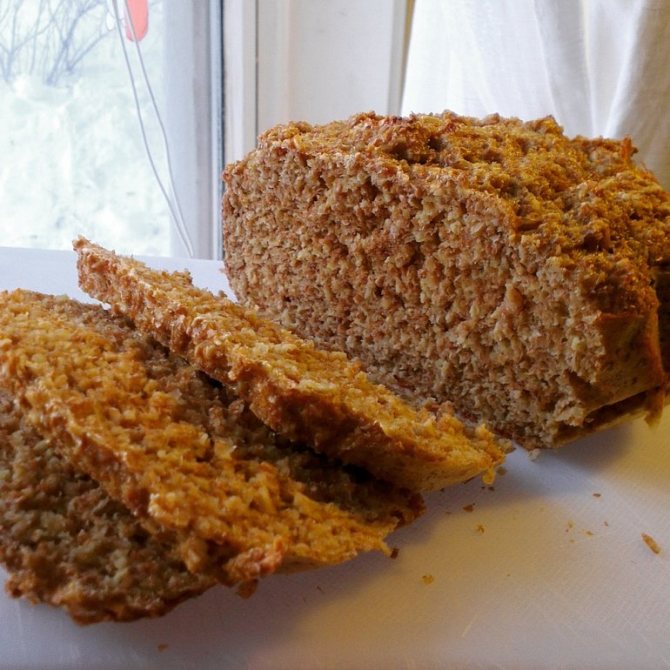
Bread with bran has a positive effect on the intestinal microflora of a nursing woman, so she can consume this product
Yeast-free bread during breastfeeding
This type of bread is prepared with natural leaven consisting of flour and water. Such bread is better absorbed, and the digestion process improves. Therefore, it is not surprising that doctors recommend this product to nursing women. In addition, yeast-free bread retains a large number of useful substances, among which the following can be noted:
- potassium;
- magnesium;
- phosphorus;
- sodium, etc.
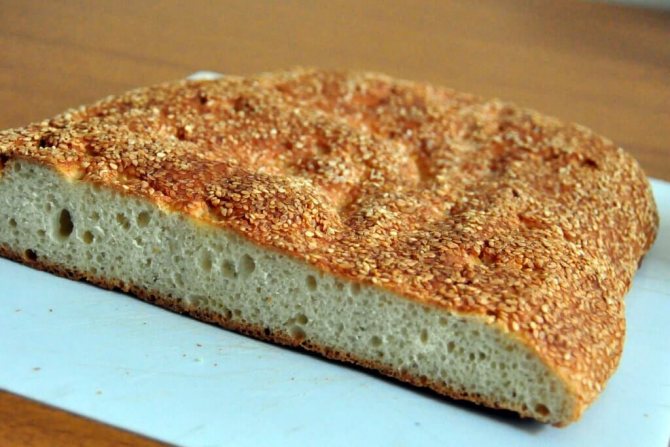
Yeast-free bread is useful for a young mother, as it improves the digestion process and is prepared with natural sourdough
This product can be used by young mothers with gastrointestinal problems (for example, pancreatitis or gastritis).
Principle 4: Eat small, frequent meals
Are you so busy taking care of your baby that you forget to eat on time? Most young mothers eat haphazardly: they skip breakfast, at lunch they snack on the go whatever they need, but in the evening, when the baby is already asleep, they spend their time worrying about the whole day. And then they complain about the scales. Stick to your diet while breastfeeding, and you will prevent the appearance of a “brutal” appetite and, as a result, overeating. It is better to eat often (4-5 times a day), but in small portions. For snacks, use fruit or sliced vegetables. And give up the habit of finishing the leftover food for your son or daughter.
Corn on the menu
Corn porridge has the following beneficial properties:
- normalizes peristalsis, eliminating constipation, as it contains fiber;
- cleanses the body of toxins;
- selenium contained in corn prolongs youth;
- has a beneficial effect on the condition of the skin, hair and nails.
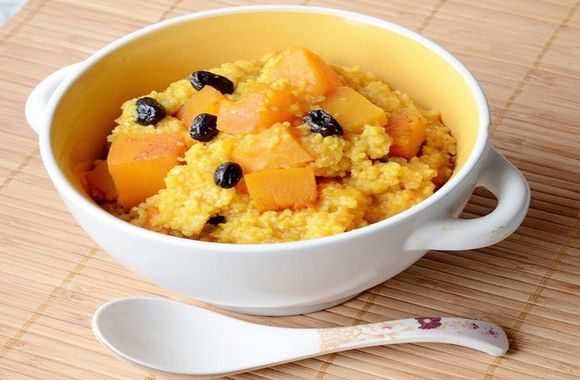
Corn porridge should be included in the diet no more than twice a week. It can cause allergies, so it should be introduced into the diet with caution. Those who are prone to diarrhea should not eat it either. Women with gastritis and duodenal ulcers should not eat corn porridge.
Principle 6. More iron
This element has been proven to help burn fat. Make sure that your menu includes lean beef, buckwheat, spinach, liver, pumpkin, oatmeal, cabbage, carrots, beets, dried apricots, raisins, nuts, legumes, seafood (sea fish, seafood, seaweed) and other foods rich in iron.
By following our nutritional recommendations while breastfeeding, you should quickly say goodbye to the weight you gained during pregnancy. Does not work? Make an appointment with an endocrinologist or gastroenterologist (nutritionist). Perhaps it is a hormonal or metabolic imbalance.
And remember that weight after childbirth disappears within a year or a little longer, and the key to losing weight is breastfeeding and night breastfeeding.
Reason for weight gain
Due to the rapid restructuring of the body during pregnancy, intensive deposition of excess fat occurs. This process is inherent in nature, since fat is needed for additional nutrition of the unborn child. Increased estrogen levels gradually lead to an increase in volume in the shoulders, waist and hips.
Some women who are not genetically predisposed to excess weight return to their original weight after childbirth. But most young mothers are faced with the fact that the accumulated fat not only does not disappear, but, on the contrary, increases. Only a small part of fat reserves remains after pregnancy in order to provide adequate nutrition for women and children during lactation. Also, fat can complement poor nutrition of the child and mother during periods of stress.
One of the main reasons for rapid obesity after childbirth is excessive nutrition. There is still an opinion that a woman who has given birth needs to eat for two in order to have a lot of milk. This rule is outdated and completely wrong. Such a diet will quickly lead to a woman’s obesity, and after lactation is completed, it will be extremely difficult to get rid of this problem.
